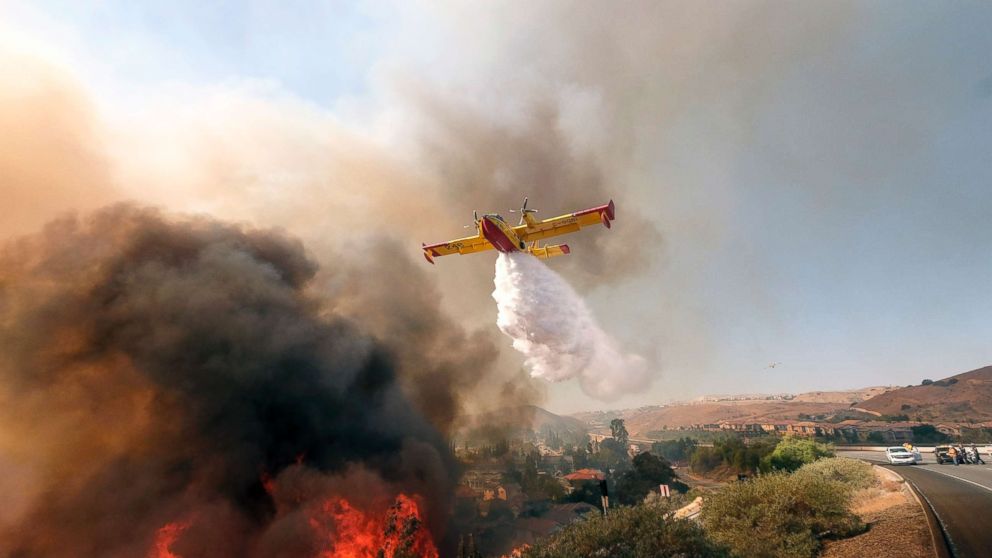
As search crews found another body Wednesday in a house burned by a massive Southern California wildfire, officials fear many more deaths in the destructive blazes at both ends of the state that have now claimed 66 lives.
The deadliest and most destructive of the two wildfires is the Camp Fire in Northern California’s Butte County, which has killed at least 63 people. Seven more bodies were found Thursday, officials said.
There were more than 631 people missing in the Butte County fire zones on Thursday night, though officials were working to track them down. Butte County officials asked residents to go to the sheriff’s website to check the missing persons list to make sure they are not on it.
The Butte County Sheriff says the remains of those eight victims were found in the town of Paradise, California. pic.twitter.com/g8xDFZ5cRq
Thom Porter, chief of strategic planning for the California Department of Forestry and Fire Protection, also known as Cal Fire, said the death toll from the Camp Fire is expected to go higher as search crews comb through at least 11,862 structures destroyed by the blaze.
“It is by far the most deadly single fire in California history and it’s going to get worse, unfortunately,” Porter said of the Camp Fire.
Gov. Jerry Brown toured the devastation caused by the Camp Fire on Wednesday with Brock Long, administrator of the Federal Emergency Management Agency, and U.S. Interior Secretary Ryan Zinke. The government leaders visited firefighters still battling the blaze, which burned 138,000 acres and obliterated the town of Paradise, destroying nearly every home in the community of 30,000 people.
“This is one of the worst disasters I’ve ever seen in my career, hands down,” Long said at a news conference Wednesday in Northern California.
Brown said the destruction “looks like a war zone.” He said he spoke earlier Wednesday to President Donald Trump, “who pledged the full resources of the federal government” to help in the recovery effort.
U.S. Health and Human Services Secretary Alex Azar on Wednesday declared a public health emergency in California.
“We are working closely with state health authorities and monitoring the needs of healthcare facilities to provide whatever they may need to save lives and protect health,” Azar said in a statement. “This declaration will help ensure that Americans who are threatened by these dangerous wildfires and who rely on Medicare, Medicaid and the Children’s Health Insurance Program have continuous access to the care they need.”
The best time to venture outside will be in the early afternoon, National Weather Service meteorologist Aviva Braun told reporters Wednesday night, blaming the light winds for the continued poor air quality.
Lisa Almaguer, public information officer for Butte County Public Health, recommended residents stay indoors as much as possible and to wear properly fitting masks when going outside.
On Saturday, stronger northeast winds mixing in the valley will help improve the air quality, Braun said.
In addition, an outbreak of norovirus has occurred at one of the shelters, Almaguer said, describing the presence of norovirus as “not uncommon,” especially at this time of year and “with hundreds of people living in close quarters.”
People who are ill at the shelter have been taken to a separate location, are using separate restroom facilities and are being cared for by public health experts, Almaguer said.
Two massive blazes forced the evacuation of at least two hospitals and eight other health care facilities. A smoke advisory was issued for portions of Los Angeles County amid concerns that smoke from the fires could present a “significant health threat” for people with asthma and other lung conditions, according to the U.S. Department of Health and Human Services.
Thousands of exhausted firefighters battling the Camp Fire in Northern California and the Woolsey Fire in Southern California appeared to be getting a handle on the two massive blazes.
Chief Ken Pimlott, director of Cal Fire, said weather conditions at both fires have improved and the strong winds firefighters were seeing over the past three days have started to dissipate.
But Pimlott said “critical fire conditions” still existed with an abundance of dry vegetation in both fire zones that could flare-up with the slightest spark.
“We’re not keeping our eye off this ball at all,” Pimlott said Wednesday, adding that 9,000 firefighters were working on the front lines of both blazes.
Firefighters, with the help of out-of-state fire crews, were showing progress in their twin battles to subdue the widely destructive blazes that have blackened a combined acreage larger than the size of New York City.
The Camp Fire showed “continued activity” on its northeast side, along the Feather River drainage basin, as it pushed toward the community of Big Bar, Cal Fire announced Tuesday night.
The lower part of the area continued to be a challenge because of the “extremely steep, extremely rocky” terrain, fire officials said.
Dry conditions will continue this week but precipitation is expected next week, Braun said.
The Butte County Sheriff’s Office announced Wednesday night that eight additional people were confirmed dead from the Camp Fire, which first started on Nov. 8. All of the bodies were located in the city of Paradise, six inside structures and two outside, Butte County Sheriff Kory Honea told reporters.
The death toll from the Camp Fire now stands at 56, making it the deadliest single wildfire in California’s recorded history. Forty-seven of those found dead have been identified, but the remains of some of the missing may never be recovered due to the severity of the fire, Honea said.
Two prison inmate firefighters were among three injured battling the Camp Fire, fire officials told ABC News.
The blaze was 35 percent contained on Wednesday.
“The entire community of Paradise is a toxic wasteland right now,” Paradise City Council Member Melissa Schuster, who lost her home in the calamity, told ABC News’ “Start Here” podcast. “In addition to that, and this is the hardest part for me to even talk about, is the number of fatalities is [among] things that we don’t know at this moment and that’s something that has to be determined before people can move back in.”
Schuster said teams from the Butte County coroner’s office are combing through thousands of destroyed homes and burned cars in Paradise.
“We will rebuild our homes, we will rebuild our town stronger, better, safer and more beautiful than ever,” she told ABC News’ “Start Here” podcast.
The Woolsey Fire, which also started on Nov. 8 in Southern California’s Ventura County, rapidly spread south to Los Angeles County.
At least 504 structures, including many homes, have been destroyed by the blaze, which swept through the celebrity enclaves of Malibu and Calabasas.
The fire killed two people in Malibu, where the entire city has been under a mandatory evacuation order, officials said.
At least three firefighters were injured battling the Woolsey Fire.
The blaze was 52 percent contained on Wednesday night, as firefighters successfully stretched containment lines. A flare-up Tuesday in the Lake Sherwood and Hidden Valley areas of Ventura County that was threatening to take off in the windy weather was quickly smothered by firefighters.
“We are not out of the woods yet. We still have tough conditions,” Ventura County Fire Chief Mark Lorenzen told reporters at a news conference Tuesday afternoon.
Los Angeles County Fire Chief Daryl Osby said the Woolsey Fire, which has spread to an area about the size of Denver, was the largest his department has battled in 100 years.
Despite Tuesday’s flare-up, Osby said, “We are getting the upper hand” on the blaze.
Another wildfire in the area, the Hill Fire, was 94 percent contained Wednesday after burning 4,531 acres in Ventura County, according Cal Fire.
ABC News’ Karma Allen, Brandon Baur, Will Carr, Stacy Chen, Matthew Fuhrman, Marilyn Heck, Bonnie McLean and Daniel Peck contributed to this report





